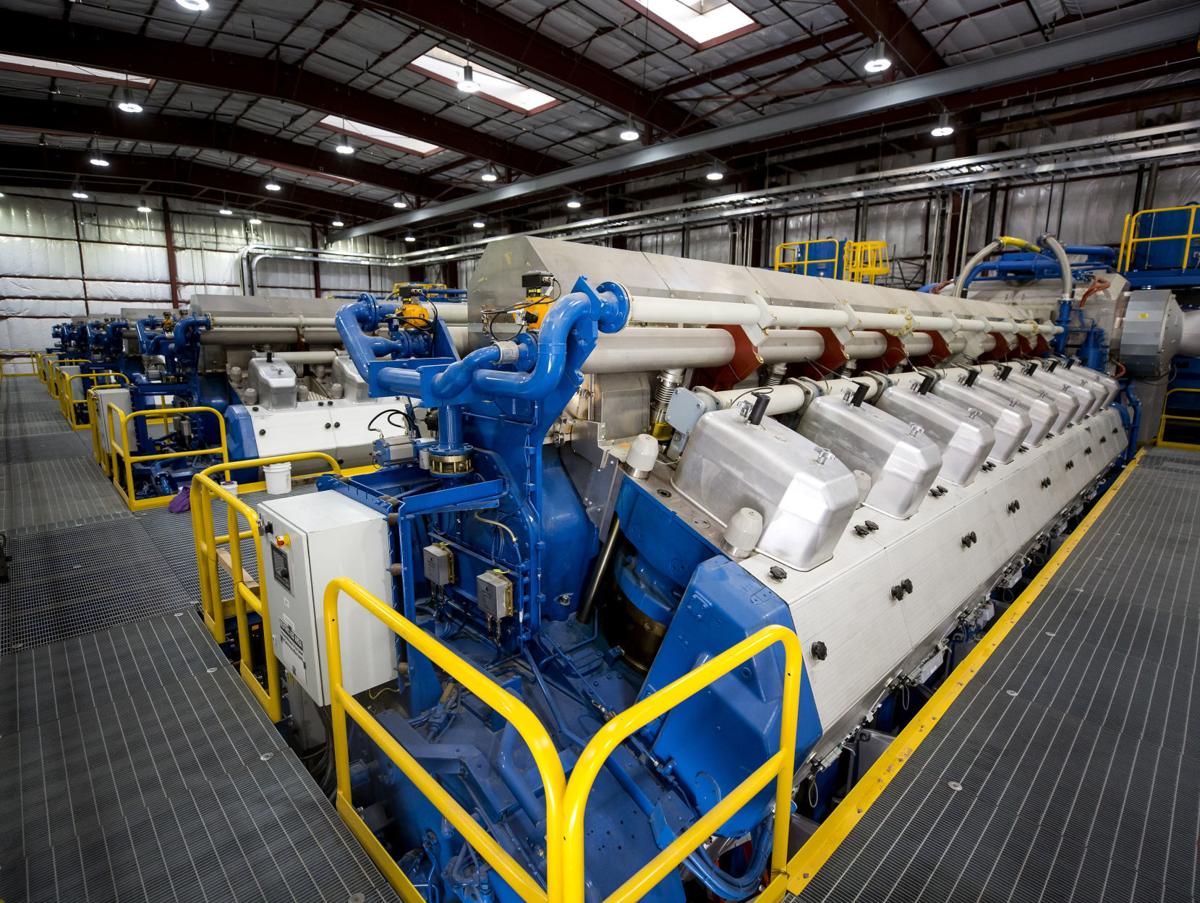Tucson Electric Power is seeking to set pollution limits for one gas-fired generator at its power plant on East Irvington Road to reflect a planned shift to seasonal use.
But environmental advocates say TEP may be trying to get ahead of potentially stricter pollution limits in a state regional haze plan that has yet to be finalized.
In a filing with the Pima County Department of Environmental Quality, TEP says it will voluntarily accept new limits on emissions of harmful nitrogen oxides, or NOx, at its gas-fired Unit 3 steam generator at the Irvington Generating Station.
The Unit 3 generator has no pollution controls for nitrogen oxides, and TEP doesn’t plan to add any, but the utility says it will meet the new limits by shifting the gas unit to seasonal summer use until its expected retirement in 2032.
TEP’s proposed new NOx limits would go into effect one year after the U.S. Environmental Protection Agency approves the Arizona Department of Environmental Quality’s still-pending regional haze reduction plan. The TEP proposal, if approved, would be adopted as part of the state’s formal implementation plan.
The Pima County Department of Environmental Quality has proposed approval of TEP’s permit change and has opened a public comment period on the change, with a public open-house meeting scheduled for March 28.
“Currently, Unit 3 is not subject to any operating restrictions and can operate at 100% capacity,” TEP spokesman Joe Barrios said. “However, TEP is voluntarily accepting new and more stringent emissions limits that will reduce NOx emissions here in Pima County and improve visibility. We’ll achieve this by gradually transitioning Unit 3 to seasonal use, strategically limiting its operation.”
TEP plans to reduce carbon emissions 80% by 2035 by providing 70% of its power from wind and solar resources while significantly expanding its use of energy storage, Barrios noted.
The proposal to limit operations at the Irvington plant is consistent with other efforts, he said, including the 2019 installation of 10 quick-starting, gas-fired reciprocating internal combustion engines at the Irvington plant to quickly supplement the intermittent power generation from renewables.
“We’re building a cleaner, greener grid as fast as we can,” Barrios said.
But Sandy Bahr, director of the Sierra Club’s Grand Canyon Chapter, said TEP may be seeking the new permit for the Irvington plant to avoid more stringent requirements in the regional haze state plan.
Bahr noted that the development of Arizona’s regional haze plan revision remains in its early stages and ADEQ has not yet issued a draft plan for public comment.
“It appears that TEP is trying to avoid addressing regional haze requirements to reduce pollution and the associated benefits to our air, our health and national parks, as well as the climate,” she said. “It should instead be doing the maximum to control NOx, especially in that area, which is predominantly a community of color that is disproportionately impacted by this power plant.”
Bahr said TEP recently made a similar move to adopt “voluntary” limits for sulfur dioxide pollution for two units at the coal-fired Springerville Generating Station, which it also wants to incorporate into the state regional haze plan.
In February, the Sierra Club and the National Parks Conservation Association filed comments with ADEQ, urging the agency to reject TEP’s Springerville permit revision as premature, saying it “improperly assumes the outcome” of Arizona’s regional haze plan before ADEQ, the EPA and stakeholders can fully scrutinize and formally comment on a complete regional analysis.
But TEP’s Barrios says that requiring additional pollution controls is unnecessary given the plan to curtail operations and measures such as “selective catalytic reduction” (SCR) equipment to limit NOx are unnecessary and prohibitively expensive.
“Our assertion is simply that the cost of installing additional controls, such as SCRs, on Unit 3 would be unreasonable and would adversely impact TEP customer bills,” he said.
Irvington’s Unit 3 has a generating capacity of 104 megawatts and is considered a “must-run” unit to meet national electric reliability standards, TEP said.
The plant also has another steam generator, Unit 4, rated at 156MW and two smaller gas turbine generators.
How to comment
The PDEQ has opened a public comment period on TEP’s proposed air-permit revision that will end April 18. For more information online, go to: tucne.ws/1jzt.
The agency will host an in-person open house on March 28 from 5 to 6 p.m. at the Abrams Public Health Center, 3950 S. Country Club Road, in conference room 3102.
PDEQ also will host a virtual public hearing on April 15 from 4:30 to 6:30 p.m., via WebEx at tucne.ws/1jzq. To participate by phone, call 1-408-418-9388 and enter event number 2495 817 4077.





